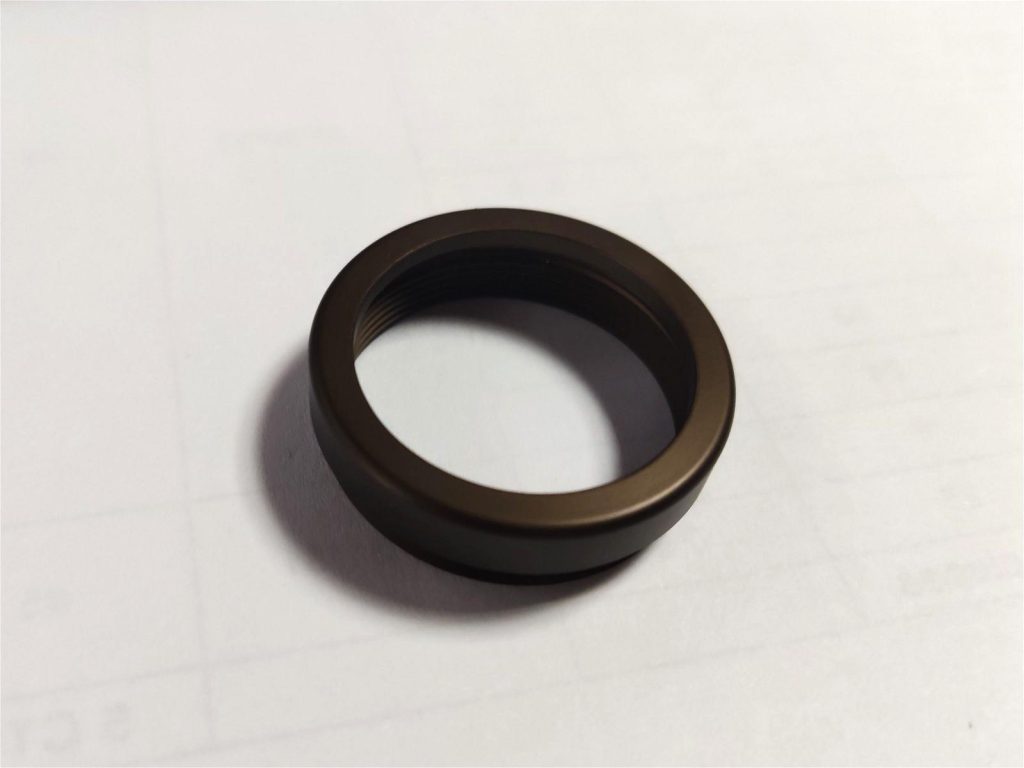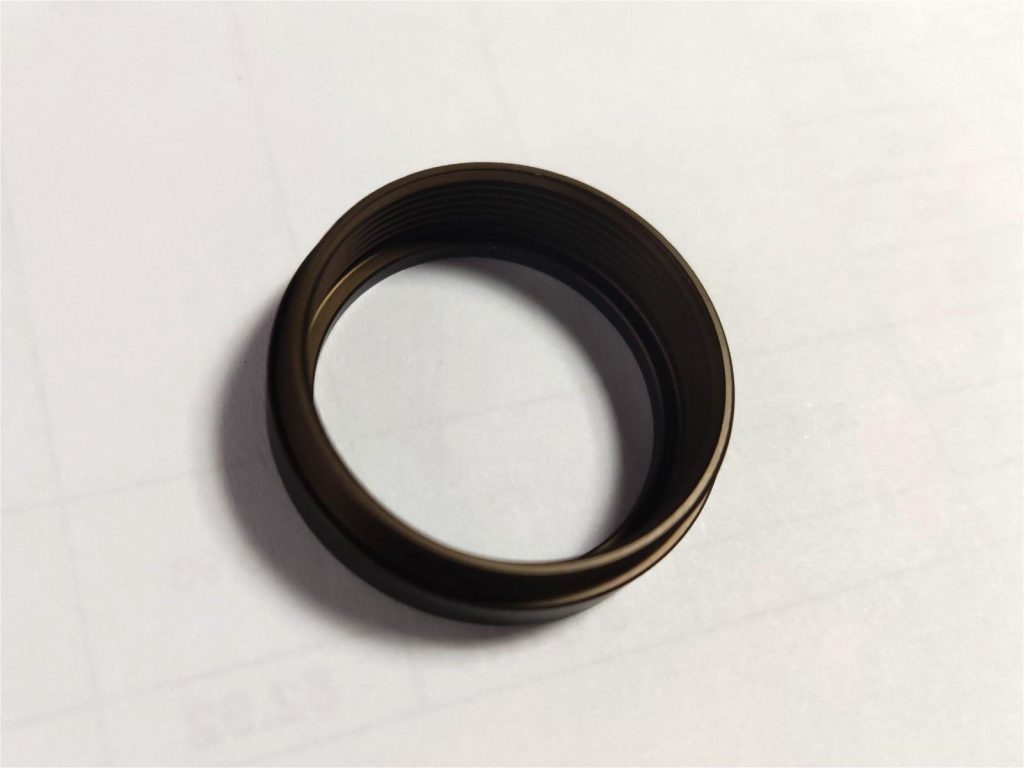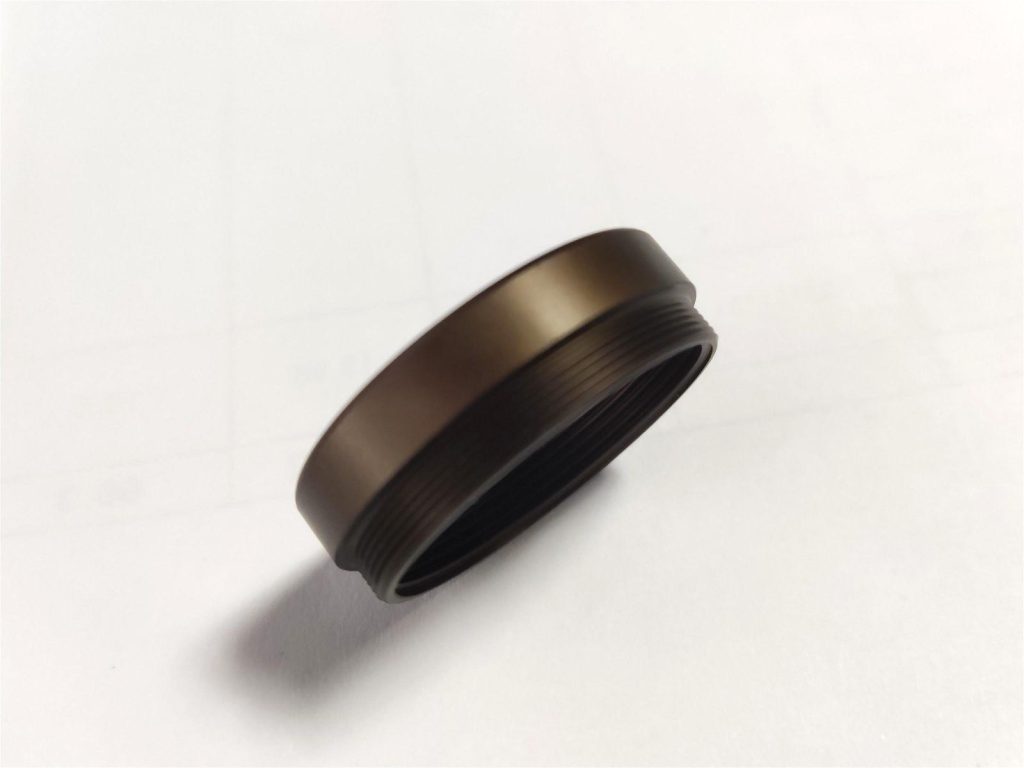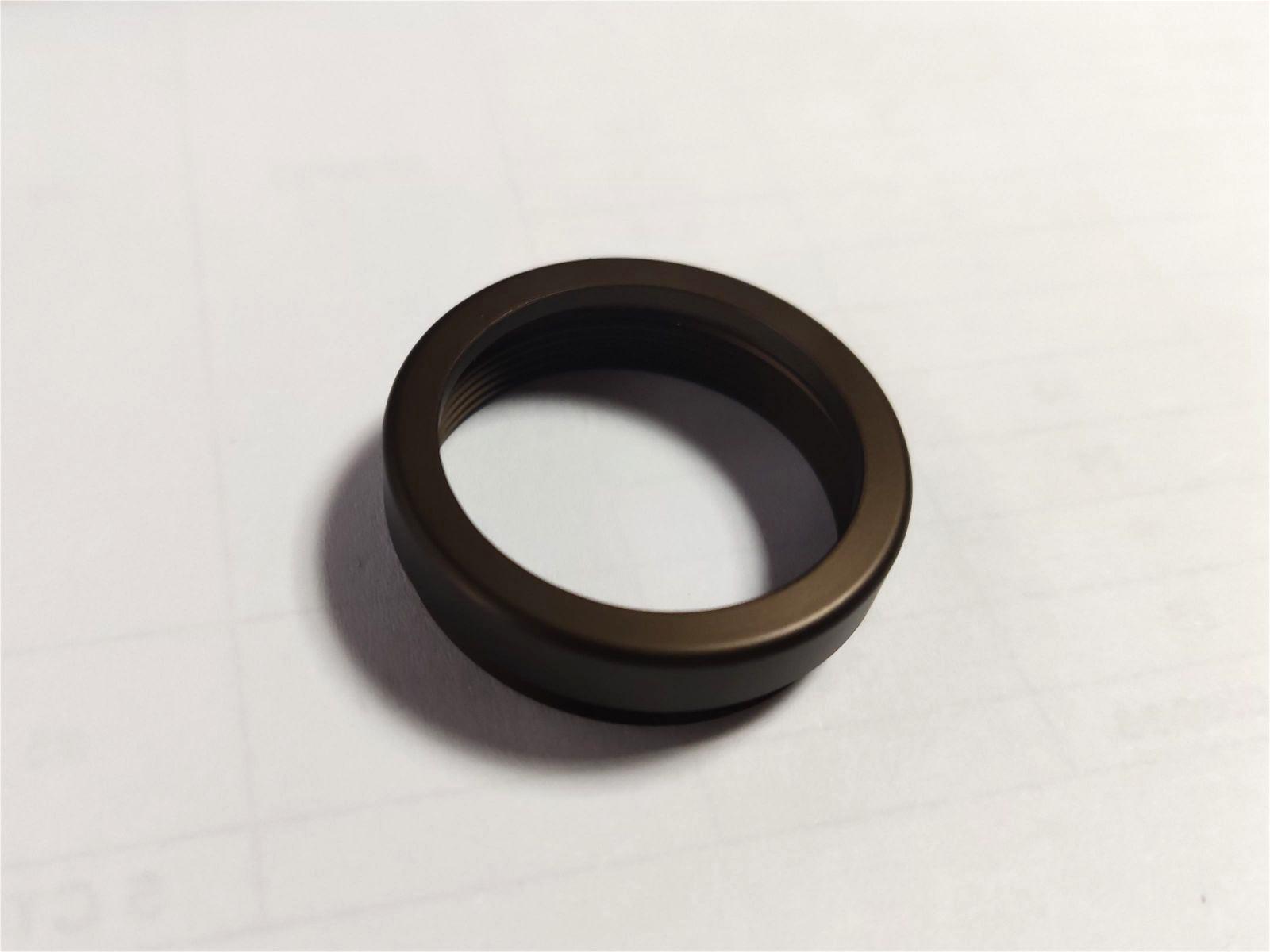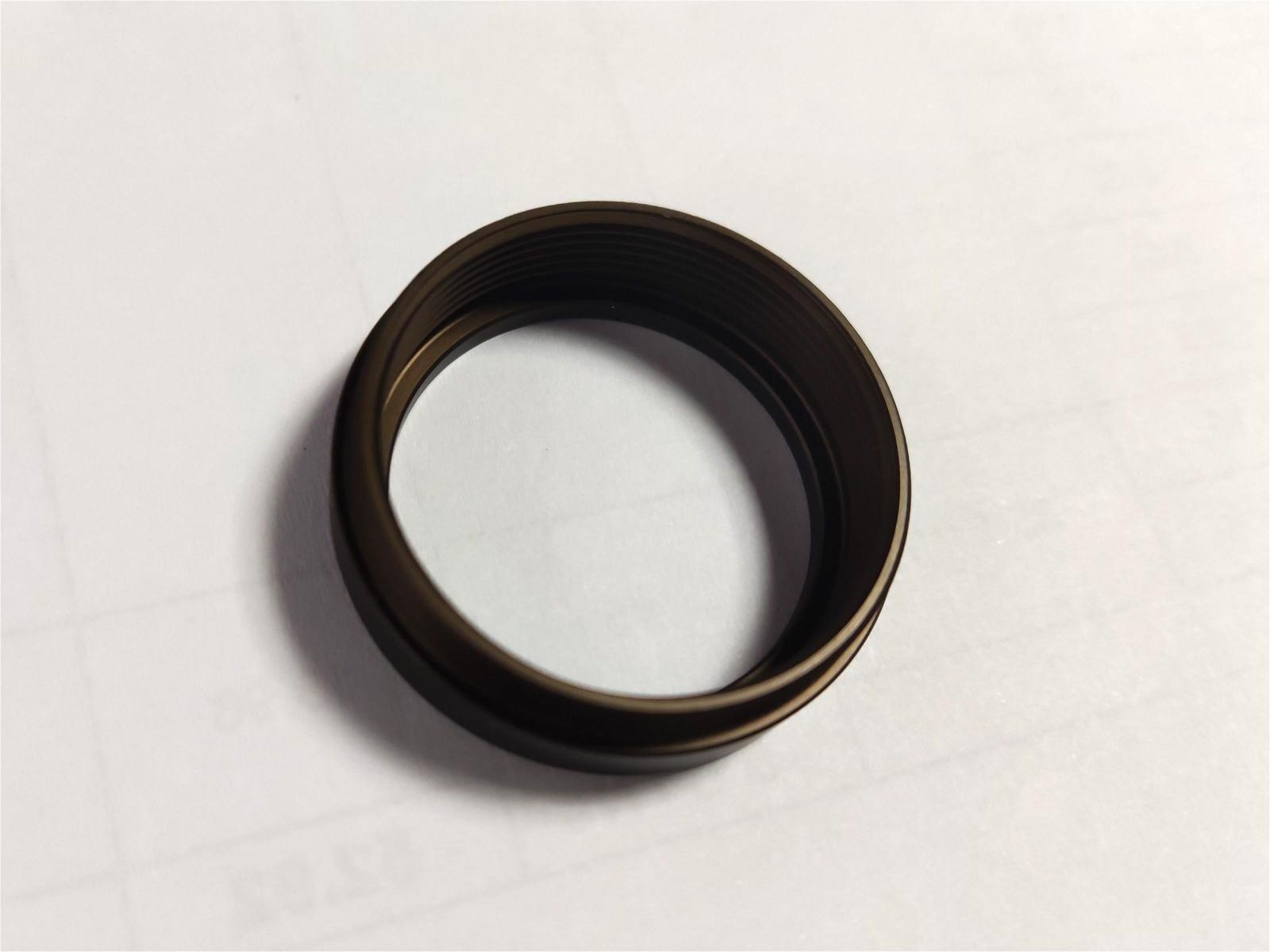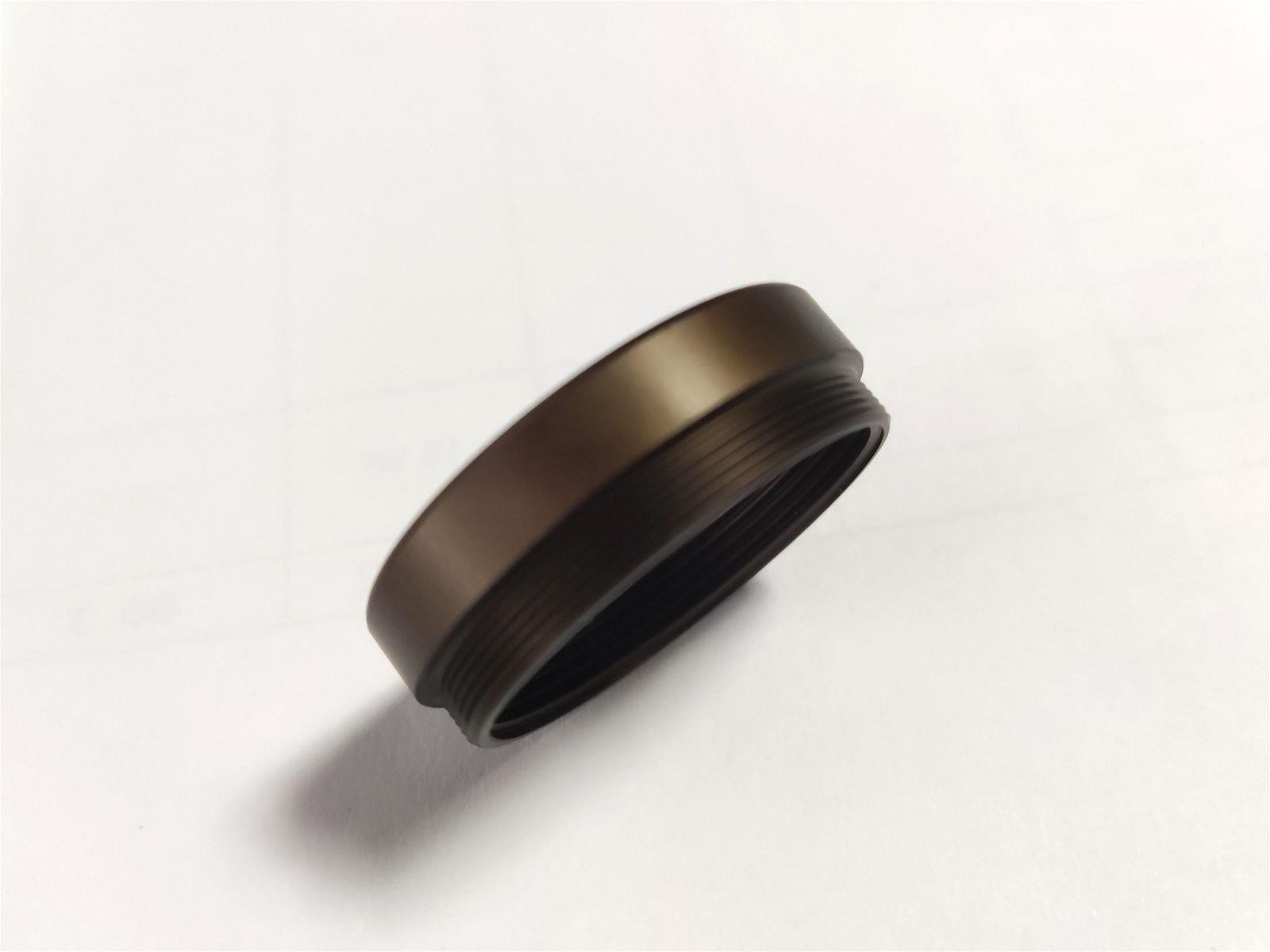Matte Dark Bronze Anodized CNC Machined Aluminum Parts
- Material: Aluminum 6061
- Size: D34*10 mm
- Process: CNC Turning
- Surface treatment: Anodized
Advantages of Using Matte Finishing on Aluminum Parts
Matte finishing on aluminum parts offers several advantages:
- Aesthetic Appeal: Matte finishes provide a sleek, modern look that is often preferred for consumer products, automotive parts, and architectural elements. The lack of shine can make the product appear more refined and sophisticated.
- Fingerprints and Smudges Resistance: Matte surfaces are better at hiding fingerprints, smudges, and other minor surface imperfections compared to glossy finishes. This makes them easier to maintain and keeps the appearance cleaner for longer.
- Glare Reduction: Matte finishes reduce glare and reflections, which is beneficial in applications where light reflection could be an issue, such as electronic device casings, automotive interiors, and display frames.
- Surface Texture: Matte finishes often have a slight texture, which can enhance grip and handling of the part. This is useful for products that are frequently touched or handled.
- Durability: Depending on the finishing process used, matte finishes can provide a durable surface that is resistant to scratching and wear. Anodizing, for example, can enhance the hardness and corrosion resistance of the aluminum surface.
- Corrosion Resistance: Matte finishes can be achieved through processes like anodizing or powder coating, which not only provide a matte appearance but also add a protective layer to the aluminum, improving its resistance to corrosion.
- Uniform Appearance: Matte finishes can help to mask surface irregularities and inconsistencies in the aluminum, resulting in a more uniform and consistent appearance.
- Customization: Matte finishes can be applied in various colors and textures, allowing for a high degree of customization to meet specific design and functional requirements.
Overall, the matte finish on aluminum parts can enhance both the functional and aesthetic properties of the material, making it suitable for a wide range of applications.
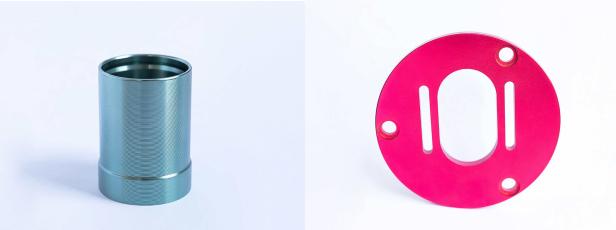
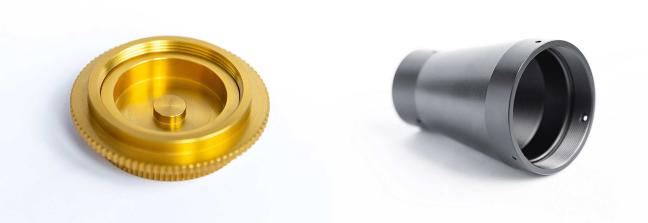
Common Surface Finishing Types on Aluminum Parts
Here are some common surface finishing types for aluminum parts:
| Finishing Type | Description | Features |
| Anodizing (Type I – Chromic Acid Anodizing) | Provides good corrosion resistance and maintains the aluminum’s natural appearance. | Good corrosion resistance, natural appearance |
| Anodizing (Type II – Sulfuric Acid Anodizing) | Allows for dyeing the aluminum in various colors and offers improved corrosion resistance. | Color dyeing, improved corrosion resistance |
| Anodizing (Type III – Hard Anodizing) | Produces a thicker, harder, and more wear-resistant surface, typically used in industrial and military applications. | Thicker, harder, wear-resistant |
| Bead Blasting | Blasting the aluminum surface with fine beads to create a uniform, matte texture. Useful for both aesthetic and functional purposes. | Uniform matte texture, aesthetic, functional |
| Brushing | Using abrasive brushes to create a uniform, textured surface with fine parallel lines, often used for aesthetic purposes. | Uniform textured surface, aesthetic |
| Chemical Conversion Coating (Alodine/Chromate Conversion Coating) | Provides a corrosion-resistant layer while maintaining electrical conductivity. Often used as a primer for painting. | Corrosion-resistant, electrical conductivity, primer |
| Electroplating | Depositing a metal coating (such as nickel, chromium, or gold) onto the aluminum part to enhance its appearance, corrosion resistance, and electrical conductivity. | Enhanced appearance, corrosion resistance, electrical conductivity |
| Electropolishing | An electrochemical process that smooths and brightens the aluminum surface by removing a thin layer of material, resulting in a highly polished, reflective finish. | Smooth, bright, polished, reflective |
| Etching | Chemically or mechanically etching the aluminum surface to create patterns or textures, often used for decorative purposes. | Decorative patterns or textures |
| Painting | Applying liquid paint to the aluminum surface for color, protection, and aesthetic enhancement. Multiple layers, including primers and topcoats, are often used. | Color, protection, aesthetic, multiple layers |
| Passivation | Treating the aluminum with an acid solution to remove contaminants and improve corrosion resistance without significantly altering the appearance. | Contaminant removal, improved corrosion resistance |
| Polishing | Buffing the aluminum surface to achieve a high-gloss, mirror-like finish. Often used for decorative purposes. | High-gloss, mirror-like, decorative |
| Powder Coating | Involves applying a dry powder to the aluminum surface, which is then cured under heat to form a hard, durable coating. | Hard, durable, color variety |
| Sandblasting | Using abrasive particles propelled by high-pressure air to clean and texture the surface, resulting in a uniform, matte finish. | Uniform matte texture, clean, textured |
These surface finishes can be chosen based on the desired aesthetic, functional properties, and specific application requirements of the aluminum part.
JTR provides both CNC machining service and surface finishing services for materials including aluminum, steel, titanium, plastic, etc. Feel free to contact them for your needs.


